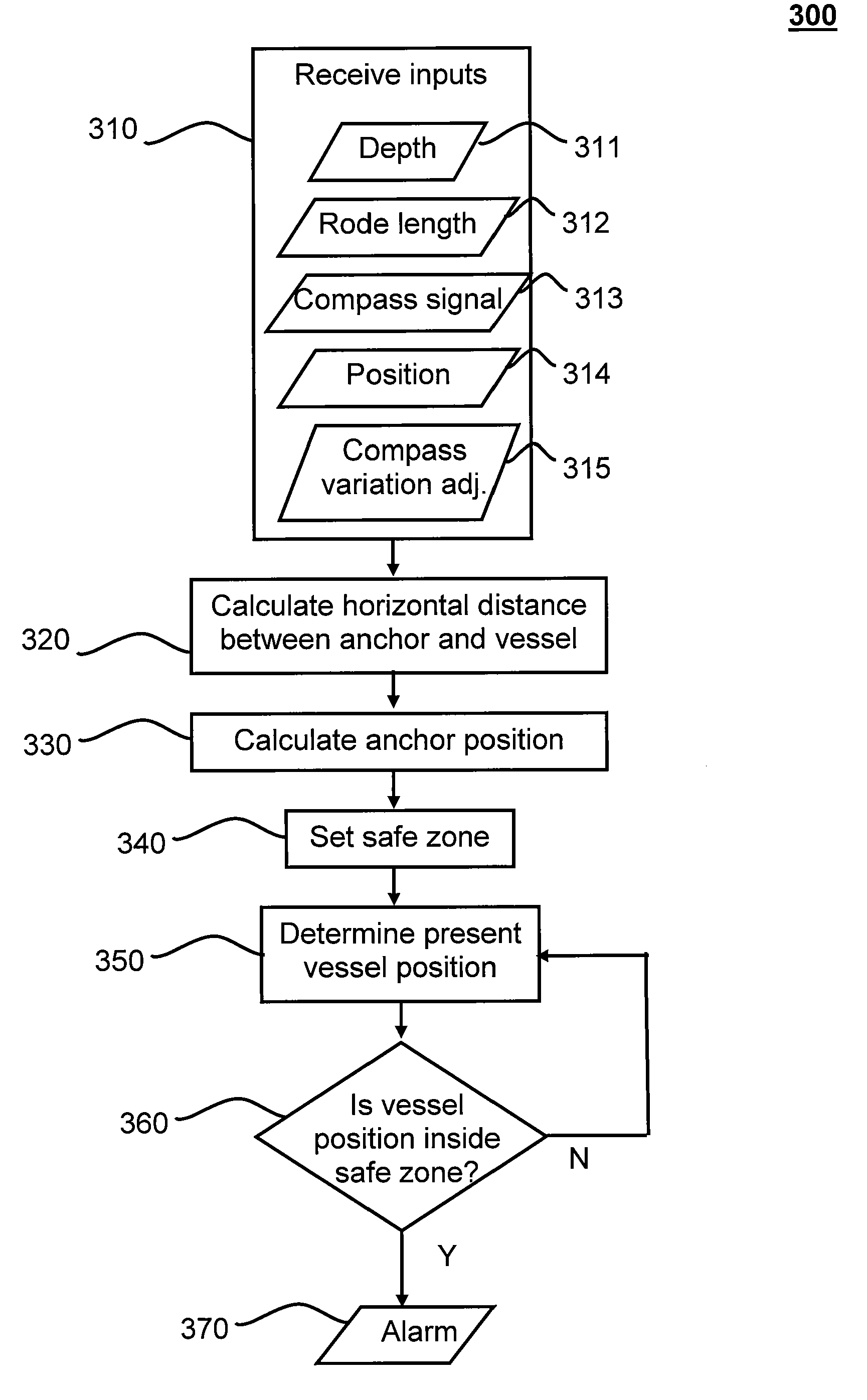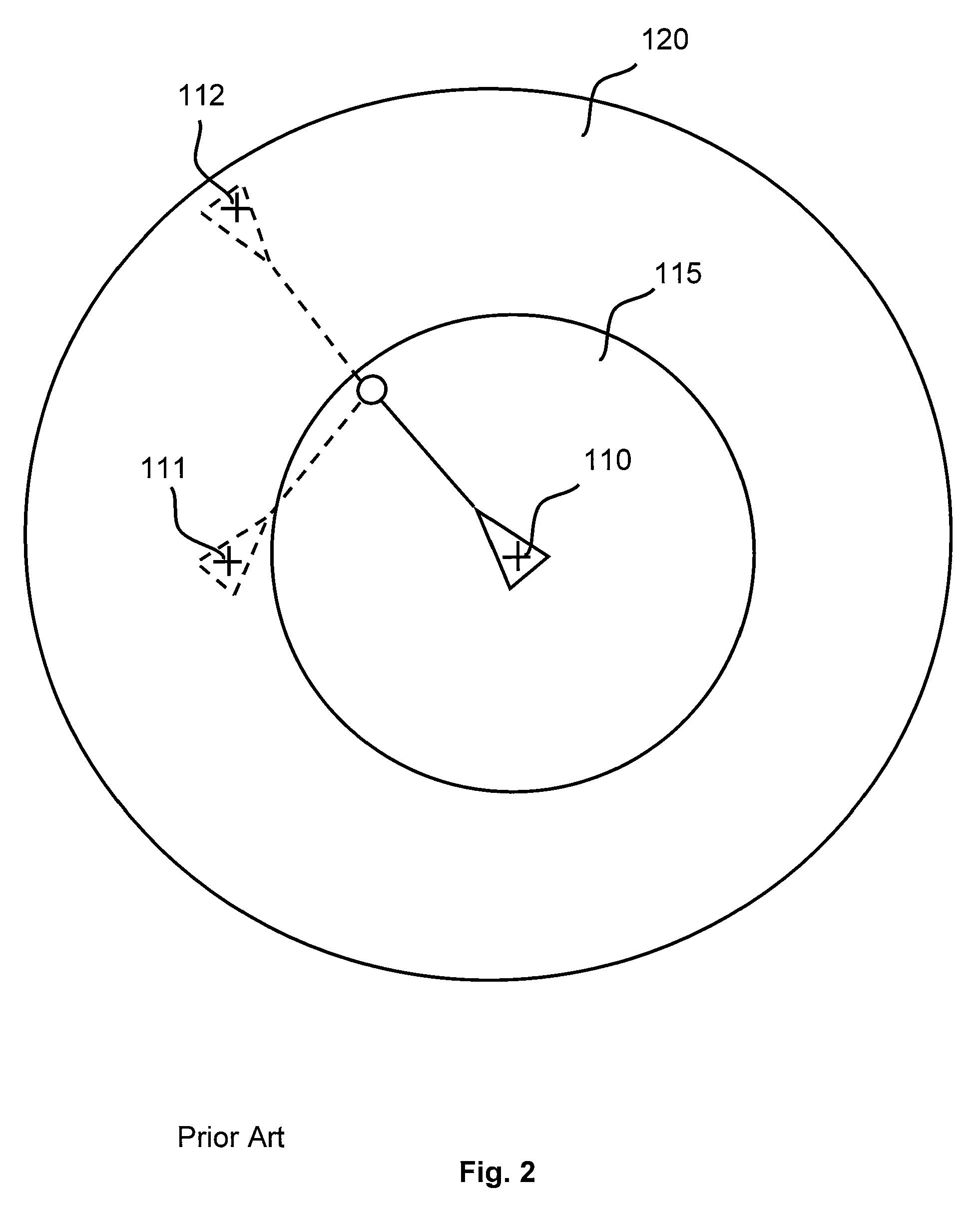Method of determining and monitoring a distance travelled by a marine vessel connected to anchor
a technology of a marine vessel and a distance, applied in the direction of waterborne vessels, vessel parts, instruments, etc., can solve the problems of inadequate anchor design, poor ground holding, inadequate rode design,
- Summary
- Abstract
- Description
- Claims
- Application Information
AI Technical Summary
Benefits of technology
Problems solved by technology
Method used
Image
Examples
Embodiment Construction
[0030]FIG. 1 illustrates a marine vessel 10 connected to an anchor 20 by rode 30. The anchor 20 is set in the seabed 25. Due to wind and tide forces on the marine vessel 10, the vessel 10 is positioned at a horizontal distance 40 from the anchor 20. The water in which the vessel is anchored has a depth 33.
[0031]FIG. 2 illustrates a top view of the vessel 10 connected to the anchor 20 by the rode 30. In an existing anchor monitoring systems, a safe zone is set around an initial position 110 of the vessel. A desirable safe zone is relatively small, such as safe zone 115. However, when the vessel 10 swings to position 111 for example, existing anchor monitoring systems would sound an alarm as the vessel 10 is outside the defined safe zone. In order to avoid false alarms caused by the vessel 10 swinging around its anchor 20 due to wind and tide forces, a relatively large safe zone 120 has to be set in order to include position 112.
[0032]The inventors have realized that a major shortcomi...
PUM
 Login to View More
Login to View More Abstract
Description
Claims
Application Information
 Login to View More
Login to View More - R&D
- Intellectual Property
- Life Sciences
- Materials
- Tech Scout
- Unparalleled Data Quality
- Higher Quality Content
- 60% Fewer Hallucinations
Browse by: Latest US Patents, China's latest patents, Technical Efficacy Thesaurus, Application Domain, Technology Topic, Popular Technical Reports.
© 2025 PatSnap. All rights reserved.Legal|Privacy policy|Modern Slavery Act Transparency Statement|Sitemap|About US| Contact US: help@patsnap.com



